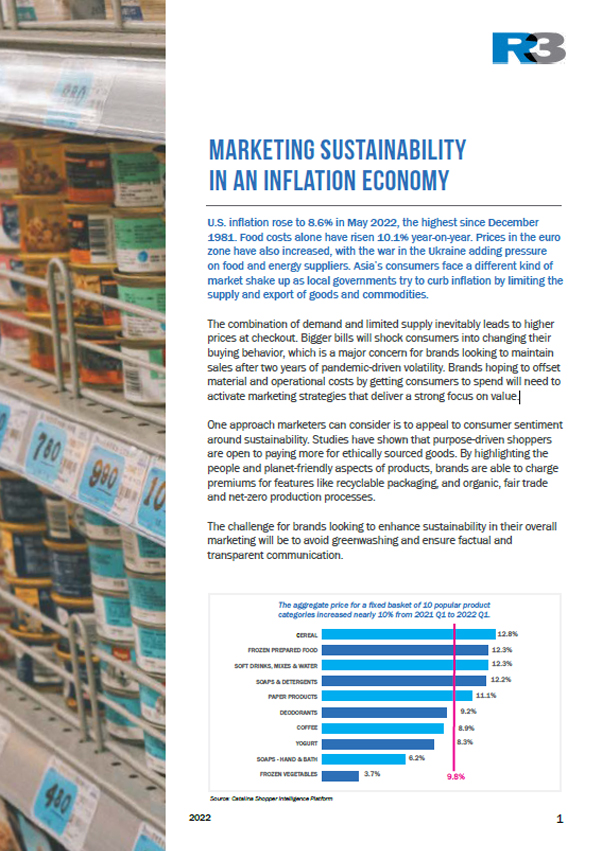U.S. inflation rose to 8.6% in May 2022, the highest since December 1981. Food costs alone have risen 10.1% year-on-year. Prices in the euro zone have also increased, with the war in the Ukraine adding pressure on food and energy suppliers. Asia’s consumers face a different kind of market shake up as local governments try to curb inflation by limiting the supply and export of goods and commodities.
The combination of demand and limited supply inevitably leads to higher prices at checkout. Bigger bills will shock consumers into changing their buying behavior, which is a major concern for brands looking to maintain sales after two years of pandemic-driven volatility. Brands hoping to offset material and operational costs by getting consumers to spend will need to activate marketing strategies that deliver a strong focus on value.
Contents
- Paying for sustainability over brand
- What compels shoppers to pay for sustainable brands?
- Factors consumers say would make products more sustainable
- Creating competitive advantage by keeping consumers informed

